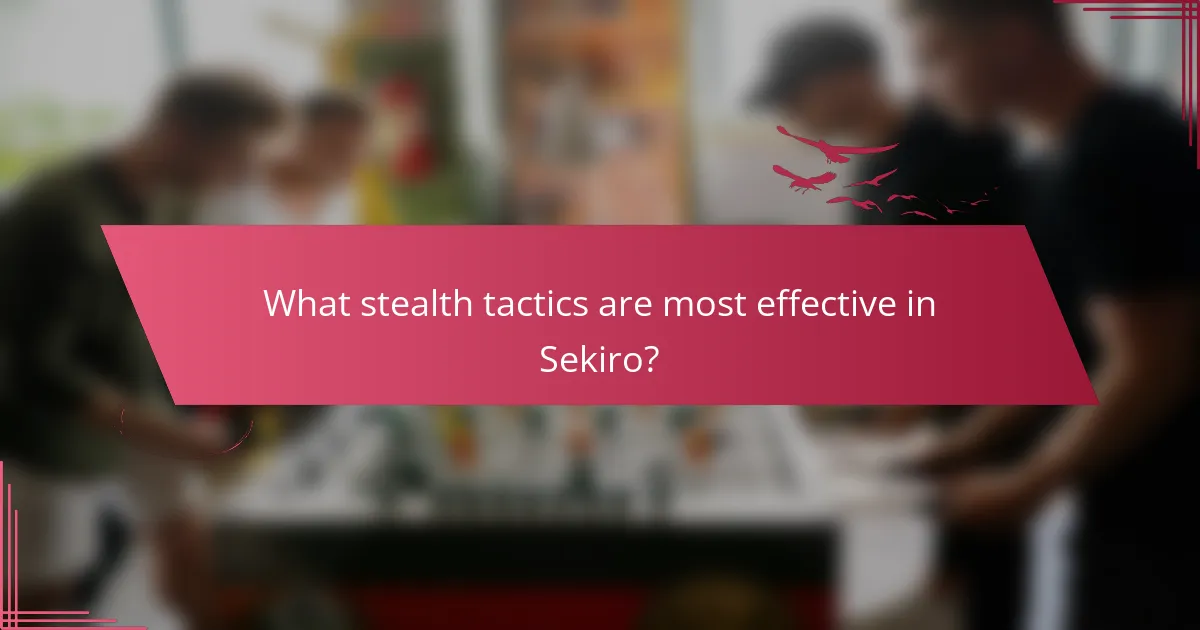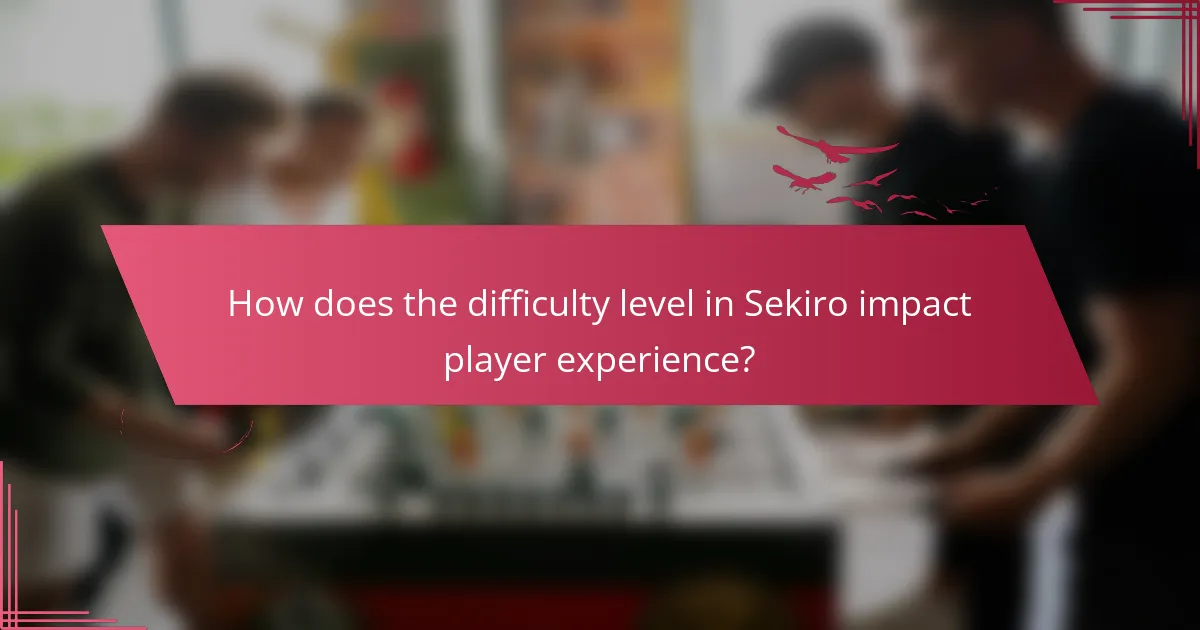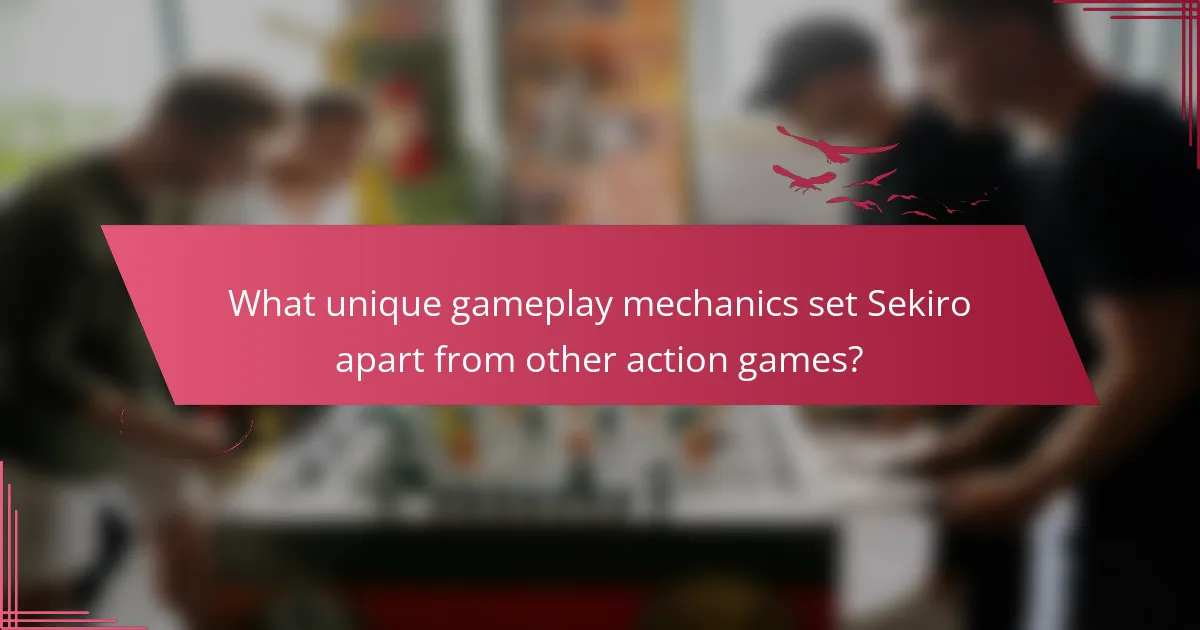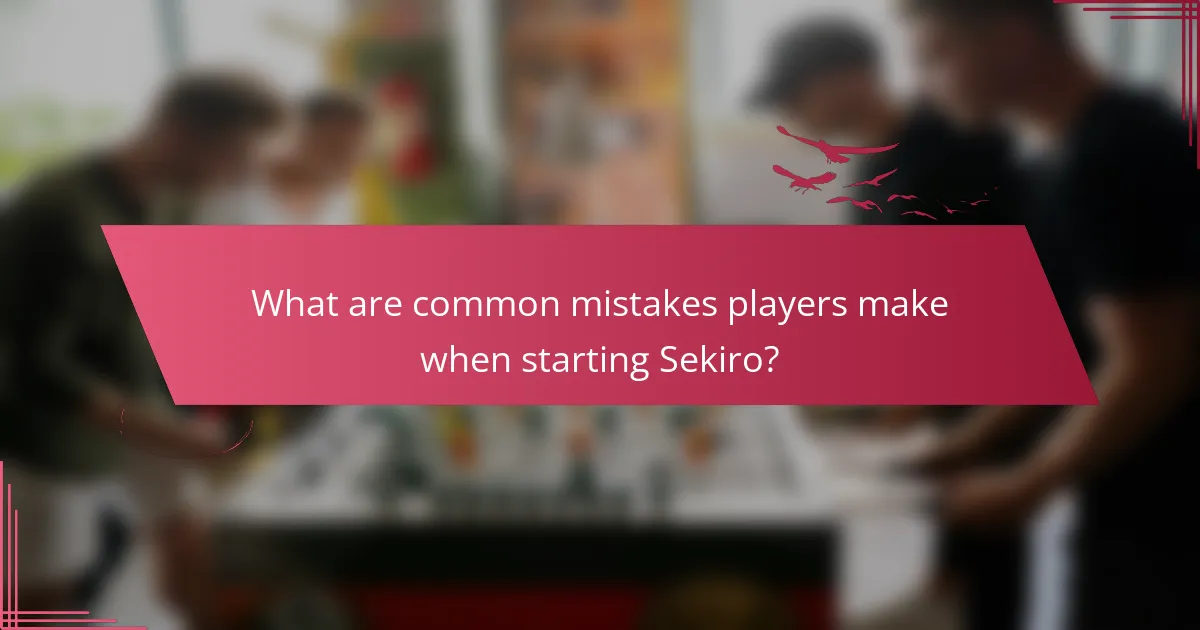Sekiro: Shadows Die Twice offers players a unique blend of intense difficulty, stealth tactics, and insights into Samurai culture. The game emphasizes honour and discipline while challenging players with its intricate posture mechanics. Stealth strategies play a crucial role in navigating encounters, enhancing the gameplay experience. Understanding these elements is key to mastering the game and appreciating its cultural depth.

How does Sekiro reflect Samurai culture and values?
Sekiro: Shadows Die Twice reflects Samurai culture and values through its emphasis on honour, discipline, and the warrior code. The game showcases stealth tactics that align with traditional Samurai strategies, highlighting patience and precision. Difficulty levels reinforce the notion of mastery and resilience, mirroring the Samurai’s commitment to continuous improvement. The protagonist’s journey emphasizes self-discipline and the moral complexities of duty, further embedding Samurai ideals within the gameplay experience.
What are the key elements of Samurai philosophy in Sekiro?
The key elements of Samurai philosophy in Sekiro include honour, discipline, and the way of the warrior. Honour drives the samurai to uphold their reputation and protect the weak. Discipline is essential for mastering skills and techniques. The way of the warrior emphasizes a deep connection to the sword and the spiritual path. These elements shape gameplay through combat mechanics and character development, reflecting the essence of samurai culture.
How do traditional Samurai practices influence gameplay mechanics?
Traditional Samurai practices significantly influence gameplay mechanics in Sekiro: Shadows Die Twice by emphasizing stealth, precision, and difficulty. Stealth tactics reflect the Samurai’s need for strategic planning and patience in combat. Players must utilise shadows and distractions, mirroring the historical focus on ambush and surprise. The game’s difficulty levels echo the Samurai’s rigorous training, requiring players to master timing and skill, much like a Samurai honing their craft. This integration creates a challenging yet rewarding experience that honours the essence of Samurai culture.
Which historical references are present in Sekiro’s setting?
Sekiro’s setting incorporates historical references from the Sengoku period in Japan. The game reflects samurai culture, including bushido principles and the importance of honour. Locations, architecture, and characters draw inspiration from real historical figures and events. For example, the Shinobi’s role mirrors the covert operations of ninjas, highlighting stealth tactics. The game’s difficulty mirrors the challenges faced by samurai in battle, emphasizing resilience and skill. Overall, Sekiro captures the essence of a tumultuous era in Japanese history through its narrative and gameplay.

What stealth tactics are most effective in Sekiro?
The most effective stealth tactics in Sekiro include utilising the environment, distraction techniques, and mastering posture mechanics. Players can hide in tall grass or behind obstacles to avoid detection. Throwing items like stones can lure enemies away, creating opportunities for stealth kills. Additionally, understanding enemy posture allows players to exploit openings for silent takedowns.
How can players utilise stealth to navigate challenges?
Players can utilise stealth to navigate challenges by observing enemy patterns, using distractions, and exploiting the environment. Stealth tactics in Sekiro encourage strategic movement, allowing players to bypass or eliminate foes silently. Players can crouch to lower their visibility and utilise grappling hooks to access higher ground. Effective use of items like shurikens can distract enemies, creating opportunities for stealthy approaches. Mastering these techniques enhances gameplay, making challenges more manageable and rewarding.
What tools and abilities enhance stealth gameplay?
Tools and abilities that enhance stealth gameplay in Sekiro include the grappling hook, stealth abilities, and distraction items. The grappling hook allows players to access high ground and avoid detection. Stealth abilities, such as the ability to crouch and move silently, reduce noise and visibility. Distraction items, like the shuriken and firecrackers, divert enemy attention, creating openings for stealth attacks. These elements collectively support effective stealth tactics, crucial for navigating the game’s challenging environments.
Which enemy types are most susceptible to stealth strategies?
Stealth strategies are most effective against weaker enemy types in Sekiro, such as the Peasant and the Soldier. These enemies lack awareness and can be easily dispatched using stealth tactics. Additionally, larger foes like the Chained Ogre can be ambushed for significant damage before engaging in direct combat. Prioritising stealth against these enemies enhances survivability and efficiency in gameplay.

How does the difficulty level in Sekiro impact player experience?
The difficulty level in Sekiro significantly enhances player experience by providing a challenging yet rewarding gameplay environment. Higher difficulty levels demand precise timing and strategy, fostering a deeper connection to the game’s samurai culture and stealth tactics. Players develop skills through trial and error, which increases satisfaction upon overcoming obstacles. As a result, the game’s design encourages mastery, making each victory feel earned and impactful.
What are the different difficulty settings and their implications?
Sekiro: Shadows Die Twice offers three difficulty settings: Easy, Normal, and Hard. Each setting affects enemy aggression, damage dealt, and player resilience. Easy mode allows for a more forgiving experience, while Hard mode increases challenge, requiring advanced skills and tactics. Normal mode strikes a balance, catering to players seeking a moderate challenge.
How does Sekiro’s difficulty compare to other games in the genre?
Sekiro: Shadows Die Twice is significantly more challenging than many other games in the action-adventure genre. Its unique combat system emphasizes precise timing and skillful parrying, which contrasts with the more forgiving mechanics found in titles like Dark Souls or Bloodborne. Sekiro’s lack of traditional RPG elements, such as character leveling, further intensifies its difficulty. Players must rely on mastering techniques and learning enemy patterns rather than grinding for upgrades. This design choice creates a steep learning curve that can be daunting for newcomers but rewarding for those who persevere.
Which strategies can help players overcome challenging sections?
Players can overcome challenging sections in Sekiro: Shadows Die Twice by employing effective strategies. Mastering stealth tactics allows players to avoid direct confrontations, enabling them to assess enemy patterns. Utilizing posture damage against foes is crucial, as it opens opportunities for lethal strikes. Timing deflections and parries enhances combat efficiency, allowing players to counterattack effectively. Practicing the use of prosthetic tools, such as shurikens or grappling hooks, can provide strategic advantages in difficult encounters.

What unique gameplay mechanics set Sekiro apart from other action games?
Sekiro: Shadows Die Twice features unique gameplay mechanics that emphasize precision, timing, and strategy. The posture system requires players to break enemy defenses rather than relying solely on health depletion. Additionally, the game integrates stealth tactics, allowing players to approach encounters creatively. The resurrection mechanic adds a layer of complexity, enabling players to revive after death, which differs from traditional game mechanics. These elements contribute to a heightened sense of difficulty and immersion, setting Sekiro apart from other action games.
How does the resurrection mechanic influence combat strategy?
The resurrection mechanic in Sekiro: Shadows Die Twice significantly influences combat strategy by allowing players to revive after death. This feature encourages aggressive play and risk-taking, enabling players to exploit openings and counterattack. Players can use resurrection strategically to maintain momentum during fights, especially in challenging encounters. Additionally, it alters enemy behaviour, as foes may become more aggressive when they know a player can return to the fight. This mechanic integrates with the game’s emphasis on skillful combat and precision, making each encounter a test of both strategy and execution.
What role does posture play in Sekiro’s combat system?
Posture is crucial in Sekiro’s combat system as it dictates offensive and defensive capabilities. Maintaining a strong posture allows players to deflect attacks effectively, while breaking an enemy’s posture opens opportunities for deadly counterattacks. The game emphasizes this dynamic, where posture management influences the flow of combat. Players must balance aggression and defense, utilising posture to gain an advantage over opponents. This unique attribute of posture enhances the game’s tactical depth, making it a defining element of Sekiro’s challenging gameplay.
Which rare abilities can players discover throughout the game?
Players can discover rare abilities in Sekiro: Shadows Die Twice, such as unique combat techniques and stealth enhancements. These abilities include the “Mikiri Counter,” which allows players to counter thrust attacks, and “Dragonrot,” a rare condition affecting NPC interactions. Other abilities like “Phantom Kunai” and “Shinobi Esoteric Texts” provide specialized skills that enhance gameplay. Mastery of these rare abilities significantly impacts player strategies and combat effectiveness.

What are common mistakes players make when starting Sekiro?
Players often make several mistakes when starting Sekiro, which can hinder their progress. Common errors include neglecting to learn enemy patterns, underestimating the importance of posture, failing to utilise stealth effectively, and not mastering the deflection mechanic.
Many newcomers rush into combat without understanding the timing required for successful deflections, leading to quick defeats. Additionally, overlooking the benefit of stealth tactics can result in unnecessary confrontations. Players should also focus on upgrading their skills and equipment to enhance their survivability.
Understanding the significance of posture over health can change the approach to battles, as breaking an opponent’s posture is crucial for executing deathblows. By addressing these common mistakes, players can improve their gameplay experience in Sekiro.
How can players avoid frustration with the game’s difficulty?
Players can avoid frustration with Sekiro’s difficulty by mastering its mechanics and employing effective strategies. Focus on timing your attacks and blocks, as precision is crucial. Utilise stealth tactics to bypass difficult encounters and learn enemy patterns to anticipate their moves. Upgrading your character’s abilities and equipment can also provide a significant advantage. Lastly, practice patience; repeated attempts will enhance your skills and understanding of the game, ultimately leading to success.
What tips can enhance the Sekiro gameplay experience?
To enhance the Sekiro gameplay experience, focus on mastering timing, utilising stealth, and exploring the environment. These strategies improve combat effectiveness and immersion in samurai culture.
Practice parrying to counter enemy attacks effectively, as this is a core mechanic. Engage in stealth tactics to avoid direct confrontations when possible, allowing for strategic advantages. Explore the world thoroughly to discover hidden items and shortcuts that can aid in progression.
Additionally, consider adjusting the difficulty settings to match your skill level, ensuring a balanced challenge. Engaging with the lore and character backstories can also deepen your connection to the game.


